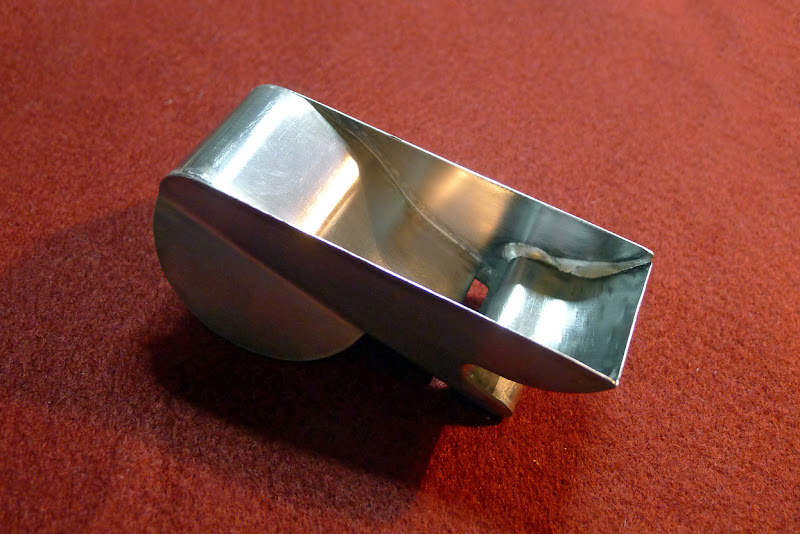[Sequel of the posts Grierson's Whistle: Drawing a template and Building the flute ]
Last step before the review, I nickel plated the Grierson's whistle. My replica was far from being perfect, and my electroplating is in accordance: a bit unveven :)

Here is the nose flute:

 |  |

 |  |
The large "hollow" front face has never been seen before, and will never feature again on another instrument.
But the most interesting novelty is the flute "elephant profile", with a rounded heel that need to be inserted in the mouth, just behind the lower lip. It is not uncomfortable, but it doesn't help "freeing" the mouth for sound effects, or even to reach sharp notes.


The Grierson has also an upper lip rest, with a more classical shape but rounded. I carefully sanded mine not to wound my lip, but one can reasonably wonder how harmful it could have been, stamped from the mouth hole, when (whether) industrially produced...

Despite these two lip rests, the Grierson is not a handsfree nose flute. It is too heavy and needs a hand or a rubber band to be retained tightly under the nose.
The front is hollow because Grierson wanted to create a amplification effect: indeed, the air duct top and the rounded base of the flute form a kind of horn shape, like a ear trumpet.

 |  |
The tonality range is rather limited and the sound is weak. I may have not been precise enough when building it, or have not respected the specifications... but anyway, there is no beveled labium but just a flat blade to split the air, like on the metal Humanatone. And we know this is not a performance solution. More, I really think that the bottom curves of the horn amp is a bad solution. At the "heel" (lower lip rest) place, they shape a front double chamber...
Finally, because of the air entrance design, half of the air blown leaks.
But as an historic item, the Grierson whistle is very interesting, particularly by it's design and shapes.

Here is a short sample in which you can notice the weakness, dullness and windiness of the sound.













































